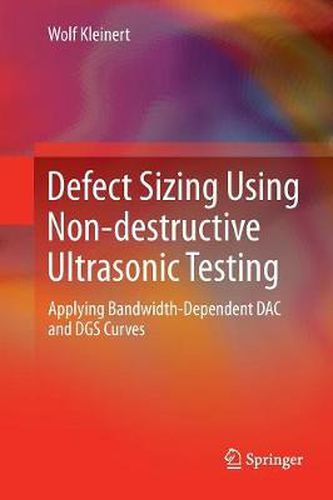Readings Newsletter
Become a Readings Member to make your shopping experience even easier.
Sign in or sign up for free!
You’re not far away from qualifying for FREE standard shipping within Australia
You’ve qualified for FREE standard shipping within Australia
The cart is loading…






This title is printed to order. This book may have been self-published. If so, we cannot guarantee the quality of the content. In the main most books will have gone through the editing process however some may not. We therefore suggest that you be aware of this before ordering this book. If in doubt check either the author or publisher’s details as we are unable to accept any returns unless they are faulty. Please contact us if you have any questions.
This book presents a precise approach for defect sizing using ultrasonics. It describes an alternative to the current European and American standards by neglecting their limitations. The approach presented here is not only valid for conventional angle beam probes, but also for phased array angle beam probes. It introduces an improved method which provides a significant productivity gain and calculates curves with high accuracy. Its content is of interest to all those working with distance gain size (DGS) methods or are using distance amplitude correction (DAC) curves.
$9.00 standard shipping within Australia
FREE standard shipping within Australia for orders over $100.00
Express & International shipping calculated at checkout
This title is printed to order. This book may have been self-published. If so, we cannot guarantee the quality of the content. In the main most books will have gone through the editing process however some may not. We therefore suggest that you be aware of this before ordering this book. If in doubt check either the author or publisher’s details as we are unable to accept any returns unless they are faulty. Please contact us if you have any questions.
This book presents a precise approach for defect sizing using ultrasonics. It describes an alternative to the current European and American standards by neglecting their limitations. The approach presented here is not only valid for conventional angle beam probes, but also for phased array angle beam probes. It introduces an improved method which provides a significant productivity gain and calculates curves with high accuracy. Its content is of interest to all those working with distance gain size (DGS) methods or are using distance amplitude correction (DAC) curves.